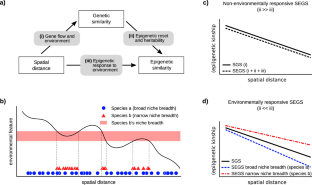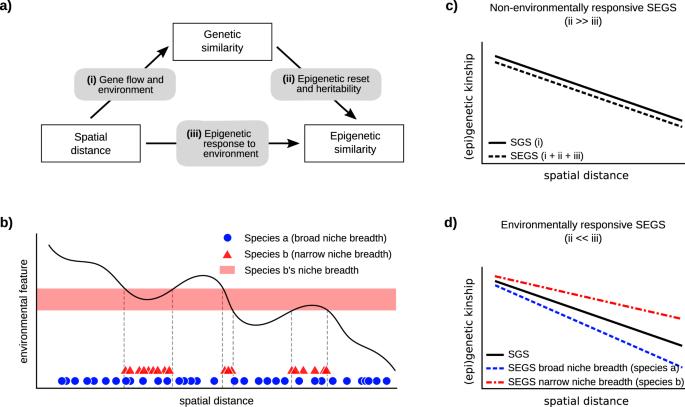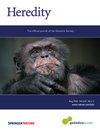地中海山区植物的表观遗传学和遗传空间结构比较:一项多物种研究。
IF 3.1
2区 生物学
Q2 ECOLOGY
引用次数: 0
摘要
表观遗传状态的变化可以使个体应对环境变化。如果这种变化是可遗传的,就可能导致表观遗传适应。因此,在植物等无柄生物中,个体间的部分空间表观遗传变异很可能反映了种群内部的环境异质性。空间表观遗传结构与基线遗传变异的偏离有助于理解表观遗传调控在具有不同最佳环境要求的物种中的价值。在此,我们假设,在环境要求较窄的植物中,由于适宜环境条件的变异性较低,表观遗传变异的空间结构应该较小。我们进行了一项多物种研究,考虑了七对同源植物物种,每一对都包括一个具有生境特异性的狭窄特有物种和一个广布物种。在每个物种的三个种群中,我们使用 AFLP 和甲基化敏感 AFLP 标记来描述空间遗传和表观遗传结构。狭窄的特有种在种群间的表观遗传差异明显低于遗传差异。在种群内部,表观遗传变异的空间结构不如遗传变异,这主要发生在狭义特有种中。在这些物种中,结构方程模型显示,这种模式与表观遗传信息和遗传信息之间缺乏相关性有关。总之,这些结果表明,在地方性物种中,空间表观遗传变异与基线空间遗传模式的脱钩程度更高。这些发现凸显了研究遗传和表观遗传空间变异以更好地了解植物生境特化的价值。本文章由计算机程序翻译,如有差异,请以英文原文为准。


Comparative epigenetic and genetic spatial structure in Mediterranean mountain plants: a multispecies study
Changes in epigenetic states can allow individuals to cope with environmental changes. If such changes are heritable, this may lead to epigenetic adaptation. Thus, it is likely that in sessile organisms such as plants, part of the spatial epigenetic variation found across individuals will reflect the environmental heterogeneity within populations. The departure of the spatial epigenetic structure from the baseline genetic variation can help in understanding the value of epigenetic regulation in species with different breadth of optimal environmental requirements. Here, we hypothesise that in plants with narrow environmental requirements, epigenetic variability should be less structured in space given the lower variability in suitable environmental conditions. We performed a multispecies study that considered seven pairs of congeneric plant species, each encompassing a narrow endemic with habitat specialisation and a widespread species. In three populations per species we used AFLP and methylation-sensitive AFLP markers to characterise the spatial genetic and epigenetic structures. Narrow endemics showed a significantly lower epigenetic than genetic differentiation between populations. Within populations, epigenetic variation was less spatially structured than genetic variation, mainly in narrow endemics. In these species, structural equation models revealed that such pattern was associated to a lack of correlation between epigenetic and genetic information. Altogether, these results show a greater decoupling of the spatial epigenetic variation from the baseline spatial genetic pattern in endemic species. These findings highlight the value of studying genetic and epigenetic spatial variation to better understand habitat specialisation in plants.
求助全文
通过发布文献求助,成功后即可免费获取论文全文。
去求助
来源期刊

Heredity
生物-进化生物学
CiteScore
7.50
自引率
2.60%
发文量
84
审稿时长
4-8 weeks
期刊介绍:
Heredity is the official journal of the Genetics Society. It covers a broad range of topics within the field of genetics and therefore papers must address conceptual or applied issues of interest to the journal''s wide readership
 求助内容:
求助内容: 应助结果提醒方式:
应助结果提醒方式:


